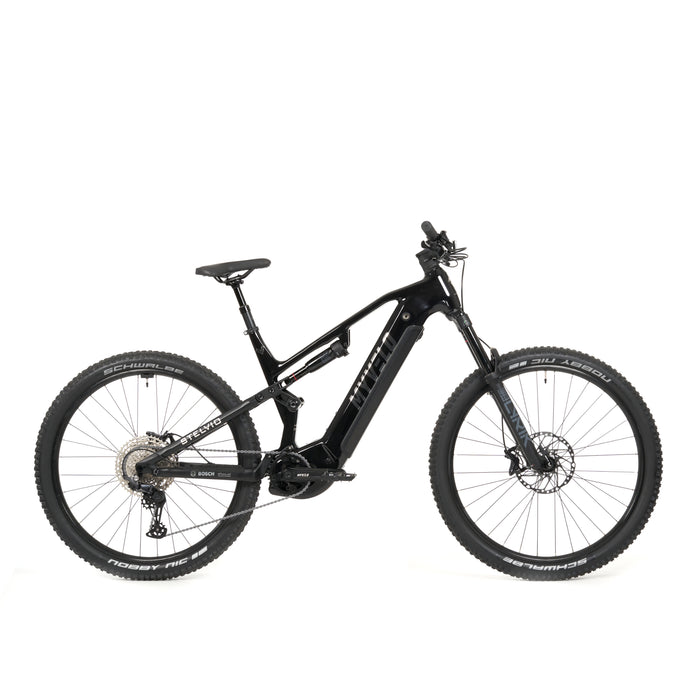
Stelvio E-Fully MTB
incl. FREE shipping & free returns

Does your mountain bike feel spongy? Or does it feel like you're going to slam hard over every root? Then it's high time to adjust the suspension! A correctly tuned fork and shock make the difference between a rough ride and smooth riding fun – whether you're riding a hardtail or a full-suspension bike.
Von David Weichel |
3 minutes read time

In this article we explain the three most important adjustment screws: Sag, Rebound and Compression – and how to adjust them step by step.
Your mountain bike's suspension not only provides comfort, but above all, control, safety, and traction . If it's too stiff, you'll lose contact with the ground. If it's too soft, you'll sink or waste energy. The setup should be appropriate for your body weight, riding style, and the terrain.
Sag is the percentage of suspension travel that your body weight already takes up when you're sitting on the bike — without any road impact. Sag is the basis of any suspension setup.
Suspension fork (front): Approx. 15–20% of the total travel
Shock absorber (rear, on full-suspension bikes): Approx. 25–30%
Get on your bike in full gear (preferably with a partner or a wall for support).
Set the rubber rings on the fork and shock absorber to the stop.
Get off carefully – without rocking!
Measure the displaced rubber ring → gives the used spring travel.
Calculate: (used route ÷ total route) × 100 = Sag in %
Too much sag? Increase air pressure or use a harder spring.
Too little sag? Release air or install a softer spring.
📌 Tip: Some suspension forks have a scale on the stanchion, which makes the whole process easier.
Rebound controls how quickly the suspension returns to its original position after being compressed. If it's incorrectly adjusted, your bike can bounce like a pogo stick—or feel sluggish.
Too fast rebound: The bike “catapults” you out of the saddle, unstable when jumping.
Rebound too slow: Suspension gets stuck, losing traction on successive hits.
Push the bike down firmly (e.g. on the saddle).
Observe the rebound:
It should not shoot above the starting level (no “top out”).
And don't come back too slowly either.
Test on the trail and adjust further if necessary.
📌 Tip: Turn the rebound control all the way down and count the clicks as you open the door. This allows you to fine-tune the settings.
Compression regulates how much the suspension is braked during compression. Modern suspension elements distinguish between:
Low-speed compression: Small movements (e.g. rocking when pedaling)
High-speed compression: Fast hits (e.g. roots, drops)
Marathon / Cross Country: Rather tight low-speed compression for more efficiency.
Trail / Enduro: Slightly more open setting for better comfort.
Bike park / downhill: Harder high-speed compression for big hits.
Not all suspension elements have separate controls – many only offer a general “compression” screw or even just a lockout function.
Many forks and shocks have a lockout or platform mode that virtually blocks the suspension on climbs. This saves energy, but should be deactivated off-road to absorb shocks.
| Attitude | Value / Setting |
|---|---|
| Say (fork) | approx. 28 mm (20% of 140 mm) |
| Sag (damper) | approx. 35 mm (25% of 140 mm) |
| Rebound (fork) | Middle position, then adjust individually |
| Compression (if available) | slightly open, 3–4 clicks from fully open |
📌 Note: This is a starting point – each driver must test individually .
If you adjust the sag, rebound, and compression damping accurately, you'll not only ride more comfortably, but also faster and safer. Many riders underestimate the potential here – and waste performance.
👉 Looking for the perfect bike that can be perfectly tuned? Then take a look at our mountain bike models – from hardtails to full-suspension bikes, you'll find the right one for your riding style.